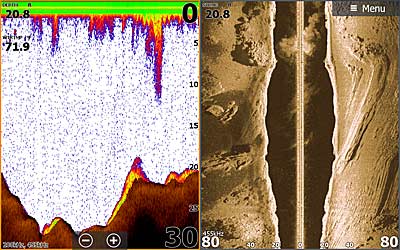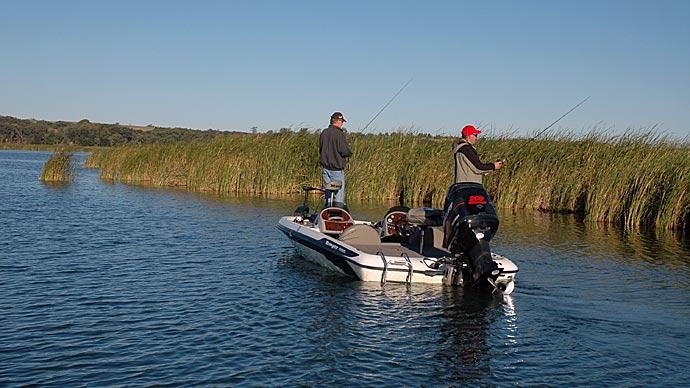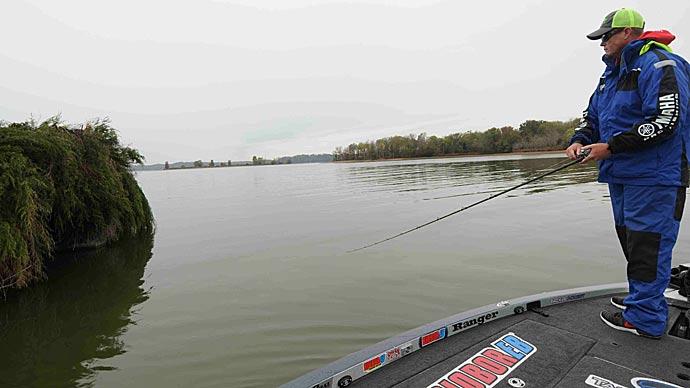
As the heat of the summer approaches, learning how to read your electronics becomes an integral part of figuring out how to find bass consistently. Your electronic eyes become your guide to unlocking the potential of deep water. Although some bass will remain shallow year-round, a majority of the population of bass will seek the comforts of deep water in the warm summer months.
But don't let the word "deep" fool you. In some of our waters, deep is often the difference between a two-foot flat and a three-foot silted creek channel.
Once you understand that the word "deep" is a relative term, you can begin the search for the three key elements of any good deep-water spot. Structure breaks, cover and bottom composition, and bait are the three key elements that your electronic eyes can help you find. Just as you look for irregularities in the visible water world, so must you look for abnormalities in the deeper underwater world.
The most critical element is structure breaks, often in the form of an old creek channel. Again these breaks and creeks do not have to be major. Many old silted-in creeks only have a foot or two variations in depth. But the key area in any creek is what's called the channel swings or creek bends.
To find these, set your boat directly on top of the deeper creek and try to visualize the creek's direction while looking at your electronic mapping. At the same time, watch your electronics, motor forward, and use a zig-zag pattern across the creek. The channel swings will look like "C" or "S" shape bends in the ordinarily straight course of the creek. Once you find these bends, drop a waypoint and explore the area further using search baits such as a crankbait or Carolina rig.

The advancement of side-scanning like Lowrance StructureScan has increased the efficiency of anglers, and zig-zagging and idling for a short time can give you an excellent picture of what is around your boat. The ability to mark waypoints for individual pieces of the cover has also made things much easier for today's bass angler.
Cover and bottom composition are the second key elements. You can easily find cover in the form of weeds, wood, or rock on your electronics. Any change in the bottom contour can be suspected to be cover. Wood, rocks, and stumps look like irregular bumps on the bottom. Weeds often take on a more stringy look, coming off the bottom in very jagged-looking masses. You can determine bottom composition by turning up the gain or sensitivity on your unit. Hard bottoms present a thin line or a brighter return when using a side scan. A soft bottom will show as a very thick line.
Finding bait is the third essential element your electronics can help you find. Schools of bait will congregate in the same creek channel bends we discussed earlier. The presence of bait is critical in attracting numbers of bass. Look for masses or "bait balls" on your electronics screens to find bait with your electronics. Depending on your color pallet settings or cloud shapes, this will look like big colorful balls. When you find a combination of all three elements we have discussed (creek channel bends, cover, and bait), the result is a load of bass.
Use your electronic eyes wisely, and don't get wrapped up in chasing after every blip and arch you see. I look for the key elements we discussed earlier and the arches. Doing this will make sure you undoubtedly have fish around you!




